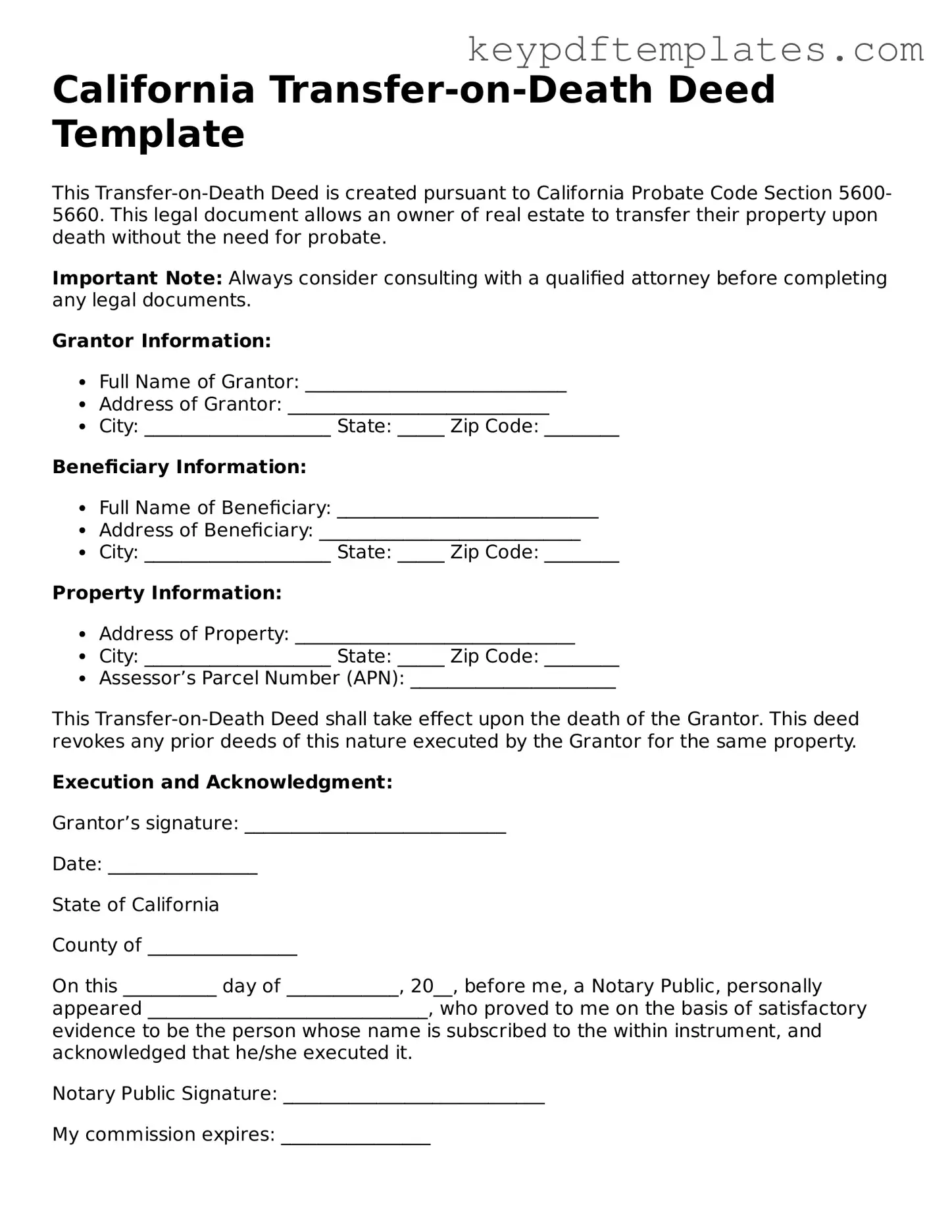Legal Transfer-on-Death Deed Document for the State of California
A Transfer-on-Death Deed is a legal document in California that allows property owners to transfer their real estate to designated beneficiaries upon their death, bypassing the probate process. This simple yet effective tool provides peace of mind, ensuring that your property goes to the intended heirs without unnecessary delays or expenses. Understanding how to properly execute this deed can make a significant difference in estate planning.
Modify Document Online
